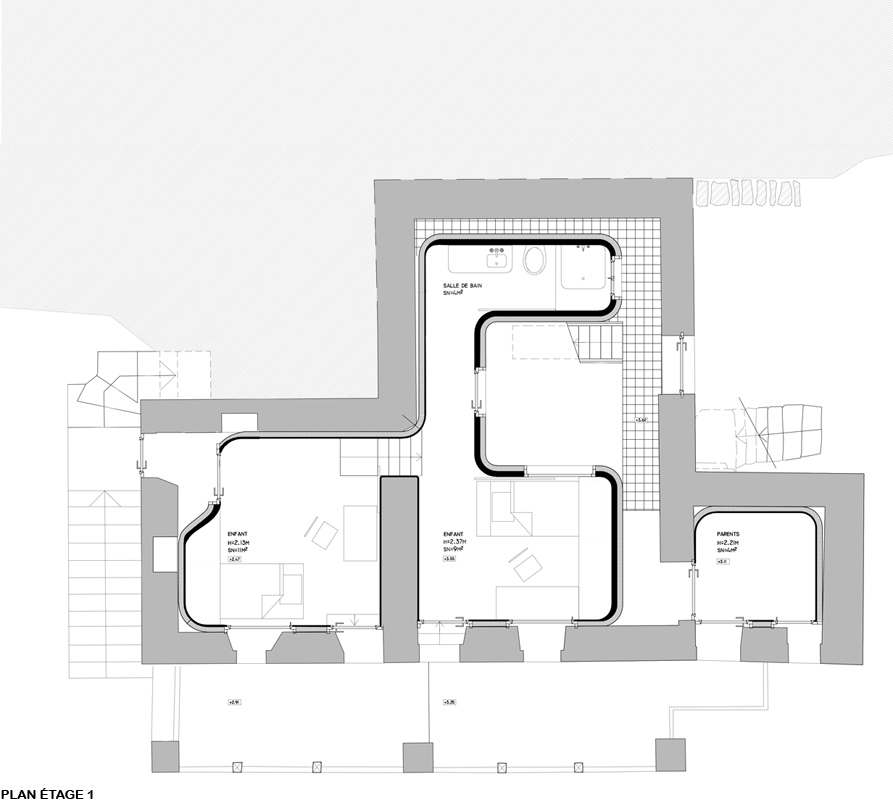
click
images fullscreen
< > 1 2 3 4 5 6
Mergoscia house
An intermediary landscapeThe project questions the coefficient of thermal ductibility, U, of a facade that is achieved with a depth of thermal insulation. Our project proposes a new layer of thermal insulation that is offset from the existing stone façade in order to define intermediary spaces with a slightly lower thermal coefficient which is more sensitive to the exterior climate. Now more variable, the renovated architecture makes a sensual dialogue with the seasons, weather movements, exposure to sunlight and the physical quality of the soil. Next, a chimney of sorts continuously grows up and down as a secret and irrational passage. Less controlled but still thermally tempered, it develops itself within the entire house, making a set of open climate situations, with the coldest and wettest at the bottom and warmest and driest at the top.
It is in these spaces that the fruits of the garden, as well as objects and clothes, are conserved, according to their requirements of moisture content and temperature. Mint leaves dry at the top, canned vegetables, stored away from the daylight, syrup, broth, and apples at the bottom…We go through this intermediary space more sensitive to the variations in weather and geology.
We consider these intermediary spaces a new landscape, not quite inside nor entirely outside, more natural yet totally artificial, which opens itself to the perfectly isolated interior spaces. In this way, they are like new windows added to the existing ones, creating a temperate climate landscape where one passes through to move between floors.
team
Andrej Bernik, Caroline Spielvogel, Jeanne Guerinclient
Privatelocation, date
Ticino, Switzerland, 2008^




